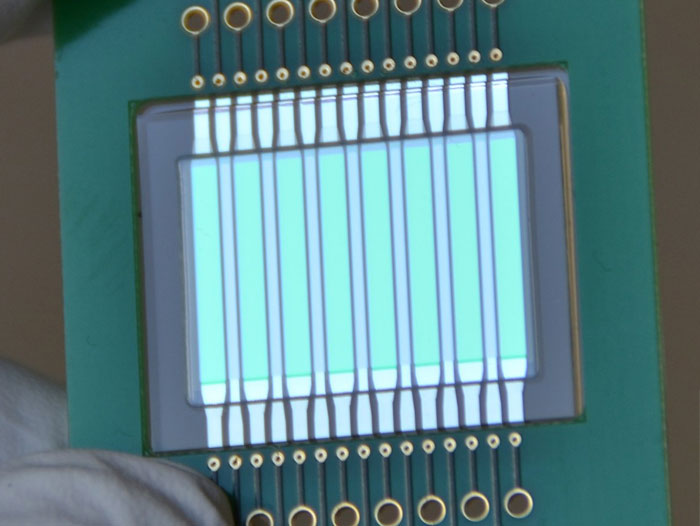Fraunhofer Dairy Quality Check Delivers Results in Minutes
November 20, 2019 | 1 min to read

In the EU-funded project MOLOKO (Multiplex phOtonic sensor for pLasmonic-based Online detection of contaminants in milK), 12 partners from seven countries have joined their forces to design a fast and inexpensive test for identifying quality factors in milk.
In a test lasting around five minutes, the new optoplasmonic sensor analyzes the product for a total of six substances, providing a supplementary check and an early-warning system within the supply chain, well before the milk is pumped into the tanker. The sensor is functionalized with receptors for specific antibodies that serve as indicators of various quality and safety parameters for milk. It allows dairy farms to carry out automated, on-site quantitative analyses.
The entire system consists of a reusable microfluidic chip, organic light-emitting transistors (OLETs) or diodes (OLEDs), a sensor comprising organic photodetectors (OPDs), a nanostructured plasmonic grating and the specific antibodies. The organic photodetector is undergoing development at the Fraunhofer Institute for Organic Electronics, Electron Beam and Plasma Technology FEP, and the microfluidic chip at the Fraunhofer Institute for Electronic Nano Systems ENAS. The OLET, meanwhile, is being developed by CNR-ISMN in Bologna, and the photonic grating by the company Plasmore Srl in Pavia, both in Italy. Coordinator of the project is CNR-ISMN.
To read the rest of the story, please go to: EE News Europe
